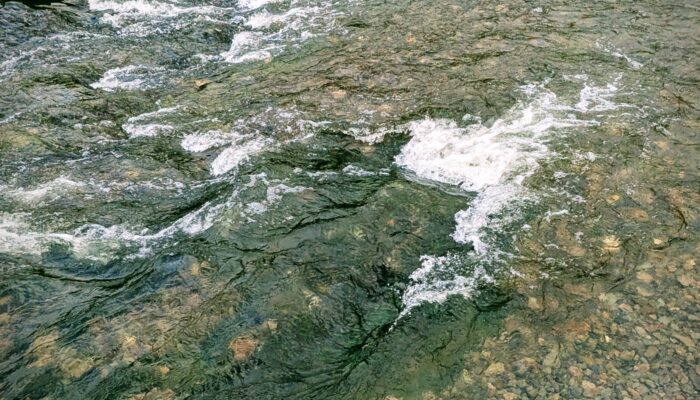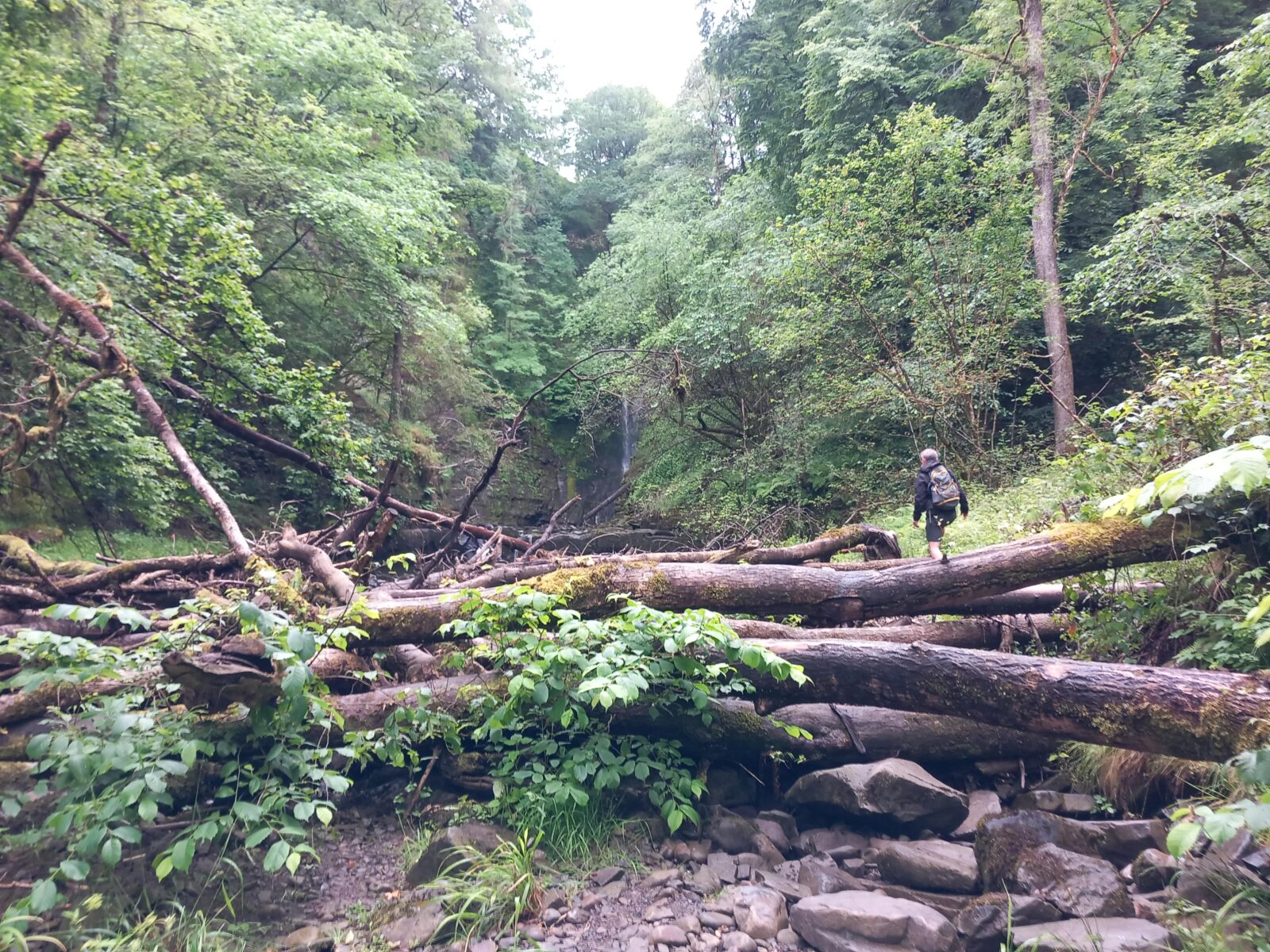
How do our environments shape who we are? How do we shape them?
Most people have a place (or places) that they know or love so deeply it feels inextricable from themselves. A place they keep coming back to over time, maybe even after years of resisting it. For me, it’s the River Neath in South Wales, which rises on the slopes of Fan Gyhirych before winding thirty-one kilometres southeast to the sea.
In 2024, I was drawn to the twelfth century legend of Elidorus, a story rooted in the river and its landscape. It tells of a boy named Elidyr who escapes his cruel teachers at Neath Abbey and hides in a hollow at the confluence. There, beneath the earth, he is led into a hidden fairy kingdom, where at first he is welcomed with warmth and invited to stay and play with the young prince. But when Elidyr attempts to steal from this world, he is banished. The portal closes, and he cannot return.
That summer, I walked the Elidyr Trail, an eight-and-a-half kilometre path through what widely known as Waterfall Country. In theory, it should take around three hours to complete. But I spent five days on it, walking and re-walking the route, tracing the stories implicit in the river’s banks: in its sandstone cliffs, in its bryophytes, in its myth. The natural and cultural histories of the valley.
Alongside Elidyr, The River Neath carries many legends. Brychan, Gwladys, Einion, and Arthur embed themselves in the caves and falls of the gorge. Each name intersects with the material fact of Wales’ industrial past, its legacy of labour and extraction. Remnants of mills and adits still litter the banks. Here was Cwm Gored Silica Mine. Here was Glynneath Gunpowder Factory. On the path, giant, studded sleeper stones signify dram roads that were used to transport materials to the canals. By the eighteenth century, the confluence was alive with mining and metalworking.
Life here has long been tied to physical labour: dangerous, repetitive work passed down through families, embedded in bodies, culture, and land. And though the mines and the forges have now fallen silent, the idea of the industrial, breadwinning man persists, even as the world that produced him slips away.
This incongruence between legacy and loss, aspiration and damage, speaks to me as a transgender man trying to understand my own relationship to masculinity: where I fit within the West’s dualistic thinking around gender. I belong, and yet I don’t. I emulate its codes, but also its contradictions. I am both inside and outside of masculine imaginings.
I can map parts of my own story onto the river, too. I grew up downstream; I knew it first as a little girl. But the world I experienced then is not the one I know now. Over that week in early June, I walked the trail over and over again, mapping and remapping it. A rebel cartographer. Each journey to and beyond the confluence redrew its mossy contours but also redrew the contours of myself: my memory, my relationship to place. In remapping the river, I also remap my inner world. I recognise my environment for the first time as a man.
The autumn before, I had been inducted into the world of psychogeography by Dr Aled Singleton. His work invited me to practice ‘extreme noticing’: to pay close, embodied attention to how we shape and are shaped by our environments. Geographer James Sidaway describes this practice as “re-encountering and representing the world.” In this way, I began to understand my creative practice.
Psychogeography offered a framework for thinking about change and mutability – about how to live in flux. It opened up a space where the changing trans body could be read alongside the changing river – where social, scientific, industrial, ecological, and personal transitions could all speak to one another. It allowed me to link, for example, natural phenomena such as phenological asynchrony with the temporal asynchrony of post-industrial masculinities: identities still reaching for vanishing landscapes.
There’s a waterfall on the Elidyr Trail that isn’t marked on official trail maps. Sgwd Einion Gam (The Fall of Crooked Einion) hides in a narrow gorge half a mile upriver from the confluence, requiring several river crossings and a fair bit of scrambling to reach. Many turn around before seeing and hearing its thunder. The difficulty I faced in finding Einion felt fitting as my story has often been one of denied access.
I wonder whether we should feel entitled to access wild spaces like Sgwd Einion Gam – it’s because of us – our poultry farming, our sewage discharges, our chemical run-off, the industrial legacy we cling to – that less than half of Welsh rivers meet the criteria for ‘good’ ecological status. The Teifi, the Tywi, the Cleddau, the Usk, the Taff, the Wye and the Ely are unravelling under human pressures. To me, they are physical reminders of what Val Plumwood called the ‘logic of domination’: the thinking that positions nature as subordinate, non-male, available for use. It’s a logic contingent on harm, both to wild spaces and to people.
I’m a poet, not a scientist, but even the most beautiful and useful ecopoetry atrophies without the body. Words alone can’t hold a river. So, in searching for a way to textually access to place, I’ve become interested in rooting my poetics in acts of situated being. With the support of River Action UK, I’m able to test the river for nitrates and phosphates, monitor priority species, and document change over time. These small, physical acts of attention not only root my creative work in the concrete, but they also allow me to contribute to an evidence base being used to legally challenge polluters and water companies. I move from observation to participation. I dip and wade, feel the biofilm on my skin. I listen with my body. I write with the river, not about it.
By engaging in this way – walking the path again and again, testing the water, mapping – I shift how I relate to the land and how I perform myself within it. I heal into a practice of care for both the river and myself.

